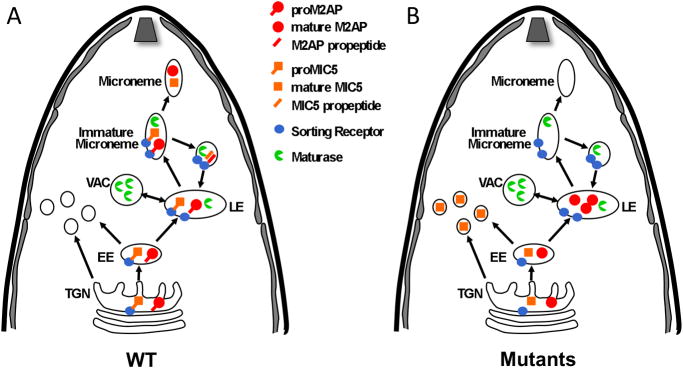Figure 9.
A working model for propeptide based targeting of M2AP and MIC5 in Toxoplasma. A. Wild-type proM2AP and proMIC5 pass-through the Trans-Golgi Network (TGN), Early Endosomes (EE) and Late Endosomes (LE). proMICs interact with hypothetical sorting receptors In the TGN, EE, and LE that guide them into a budding immature microneme where propeptide cleavage is performed by maturase(s). The sorting receptor is then recycled back to the LE to pick up more cargo. B. Mutant proM2AP is guided through the early secretory organelles by its binding partner MIC2 (not shown) but is arrested in the LE because of a failure to interact with the sorting receptor. Mutant proM2AP is still processed to some extent by maturases in the LE. However, mutant proMIC5 does not have a binding partner to guide it to LE and hence is not processed by maturases in the LE or immature microneme. Instead it is diverted to punctate structures that are distinct from the endosomal system.

